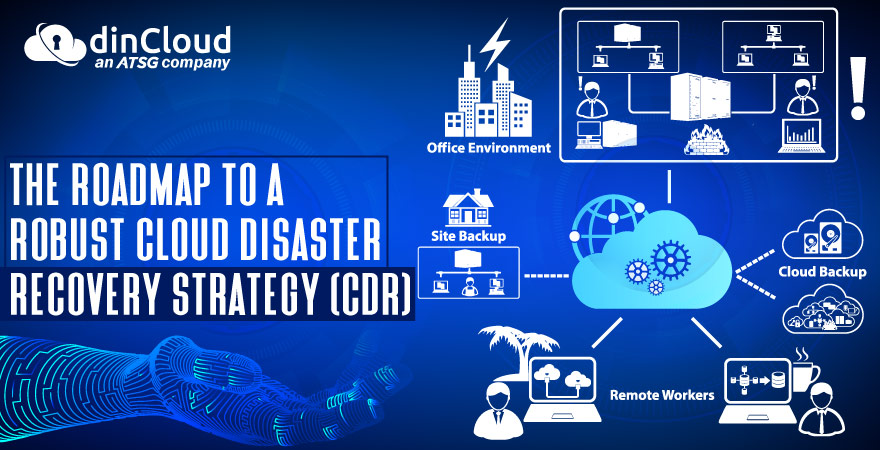An increasing number of enterprises are constantly expanding their cloud footprint. It involves a multitude of cloud deployment models, ranging from the private to hybrid and lastly, the multi cloud.
However, one thing that the deploying enterprises need to keep in mind is that as their cloud footprint increases, so does the overall attack surface. This is something that the cyber miscreants out there are also well aware of.
It comes as little surprise that cloud infrastructures are increasingly coming under cyber attacks of all forms and magnitude. Another thing to note is that cyber attacks are not the only threat to your cloud environments, as other avenues also can’t be ruled out.

Why Cloud Disaster Recovery (CDR)
Regardless of whether it’s a Cloud based environment or on-premise one, the need for a robust Disaster Recovery (DR) strategy is really critical. So, what exactly is a robust Cloud Disaster Recovery (CDR) strategy?
Well, it is the ability of an enterprise to continue its mission critical operations and workloads, in the event of any disruption to the mainstream cloud infrastructure. A robust CDR strategy is no more an option, rather it has become a necessity.
Let us discuss the roadmap towards implementing a robust Cloud Disaster Recovery (CDR) strategy.
Map Your Cloud Environment
These days, the multi cloud is one of the most sought after cloud deployment models among enterprises of all sizes. So, the best starting point towards a robust CDR is mapping your entire multi cloud environment, so you know which workload is deployed where.
Identify the Mission Critical Components
Preparing your entire cloud environment for a robust CDR posture could be prohibitively expensive. Instead, it is vital to identify the mission critical workloads and processes, which will then be outlined for making a part of the overall CDR strategy.
Determine the Recovery Point Objective (RPO)
RPO is a measure of how much historical data is required by an enterprise to keep its mission critical applications and processes up and running in the event of a disruption. It can range anywhere between several months to a few weeks, or to even a few days.
Identify the Recovery Time Objective (RTO)
The next crucial step in designing a robust Cloud Disaster Recovery (CDR) strategy is the RTO. This metric is a measure of the time it would take an enterprise to restore its mission critical processes, in the event of a disaster.
Deploy, Test and Validate Your CDR Strategy
This is the last, but the most crucial element of any robust CDR strategy. What all has been chalked out in the above steps will actually be given a formal structure at this stage. The first sub-process at this stage is actual deployment of the CDR strategy.
Once deployed, it is really important to test the efficacy of your CDR strategy by invoking it in a mock disaster recovery session or drill. This step is where all the planning and execution of the CDR strategy will actually be put to a rigorous test.
After the testing phase comes the equally important phase of validating your CDR strategy. Any shortcomings or weaknesses that are highlighted during the deployment and / or testing phase need to be rectified so that when something actually happens, things work.
Tweak Your CDR Strategy
Businesses don’t operate it a vacuum. The business, regulatory and technology landscape is constantly evolving. It is imperative for every business to periodically review its CDR strategy, making sure it is well aligned with the latest business and regulatory needs.
This process should be periodic and repetitive, so that the CDR strategy that was envisioned months or years back is still equally effective in the present day DR landscape. Any necessary changes will have to be undertaken by the enterprise.
Conclusion
As the influence of Cloud Computing solutions and environments constantly rises, so does the need for having a robust Cloud Disaster Recovery (CDR) strategy. Failing to do so can mean downtime for an organization, which can have devastating consequences.
When designing a DR strategy, it is imperative that an organization aims for the perfect balance between efficiency, effectiveness, costs and relevance of the Disaster Recovery (DR) mechanisms. Present day regulatory frameworks also necessitate robust CDR.
Contact dinCloud, an ATSG company, which offers robust Cloud Disaster Recovery (CDR) services, either as an extension of its mainstream services, or as a stand-alone CDR offering, at a fraction of the cost of on-premise deployment models.


